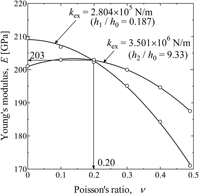Article contents
Measurement of local mechanical properties using multiple indentations by a special conical indenter and error analysis
Published online by Cambridge University Press: 06 January 2016
Abstract

This paper proposes a method for determining the mechanical properties (Young's modulus, Poisson's ratio, yield strength, and work hardening factor) of a material at a specific point using an indentation technique that utilizes a specially designed indenter in conjunction with an inverse problem and finite element analyses. The specially designed indenter combines the characteristics of spherical and conical indenters and can be used to produce multiple indentations at a single point. The feasibility of the proposed method for determining the local mechanical properties of a material was confirmed by detailed precision verifications in the ideal case and the worst case.
Information
- Type
- Articles
- Information
- Copyright
- Copyright © Materials Research Society 2016
References
REFERENCES
- 3
- Cited by

